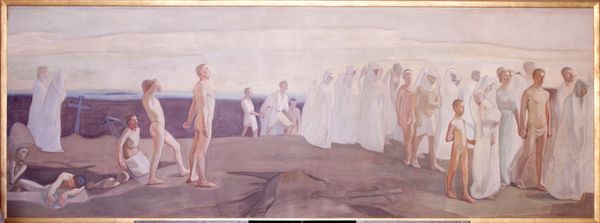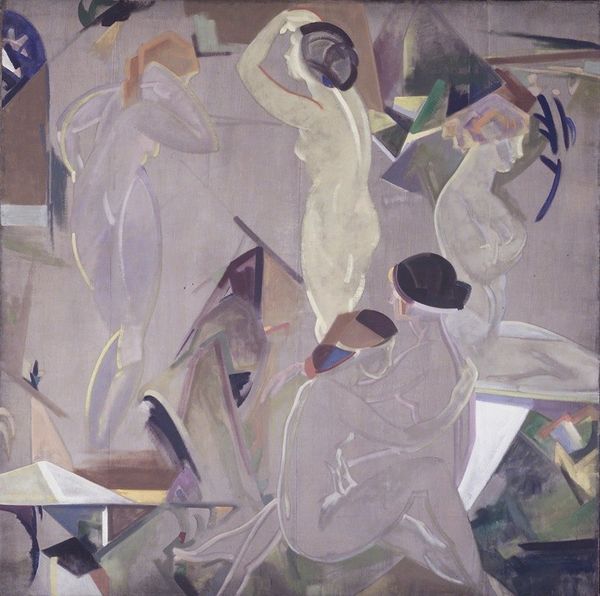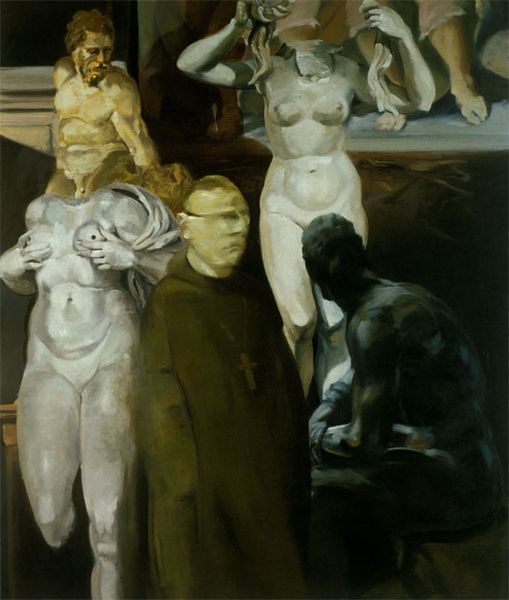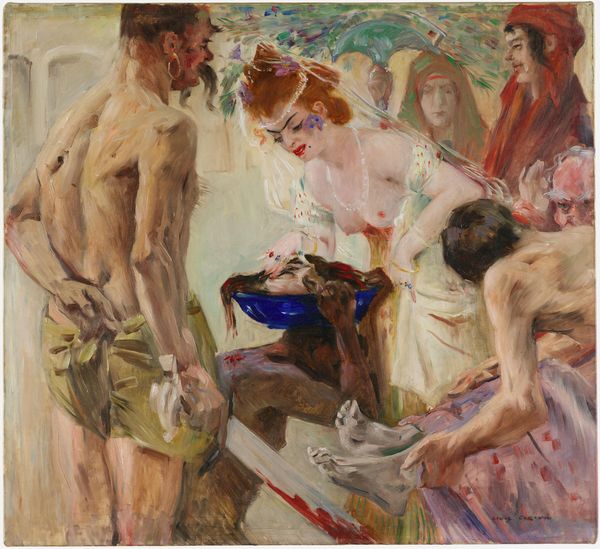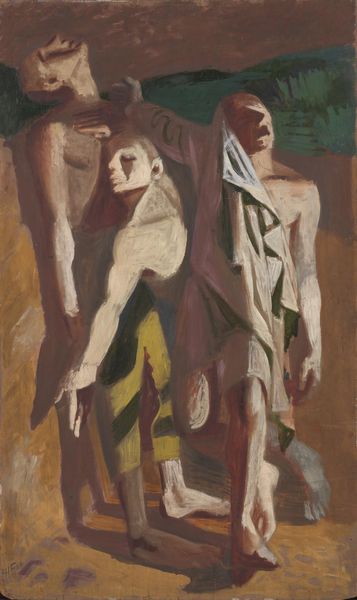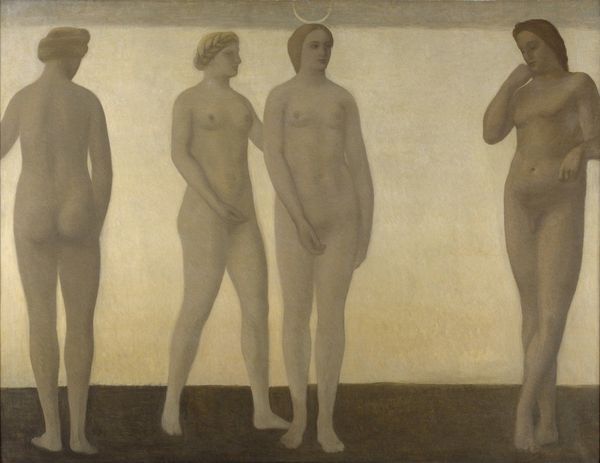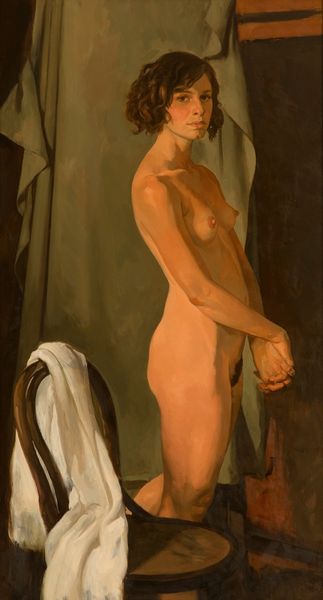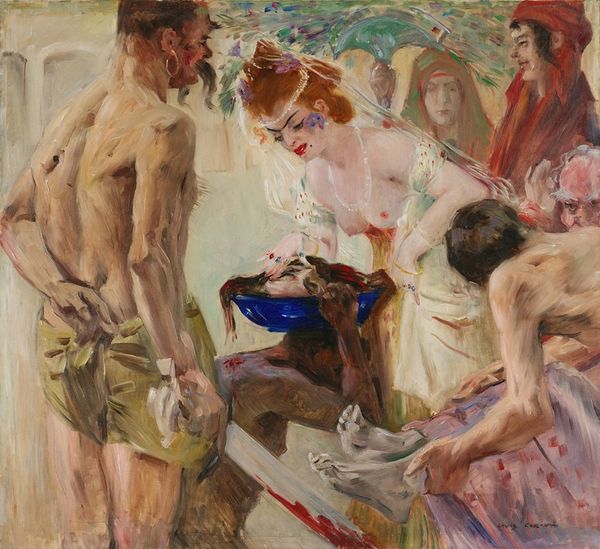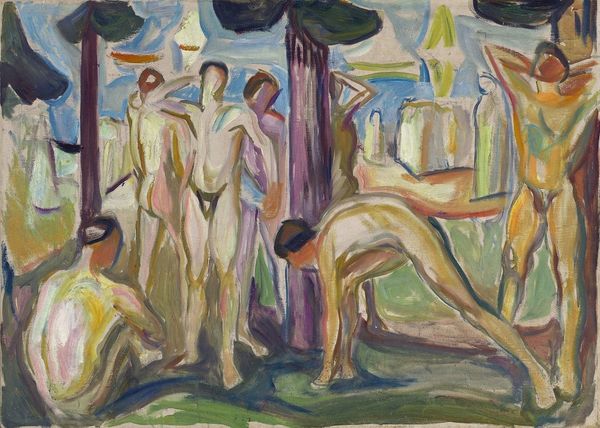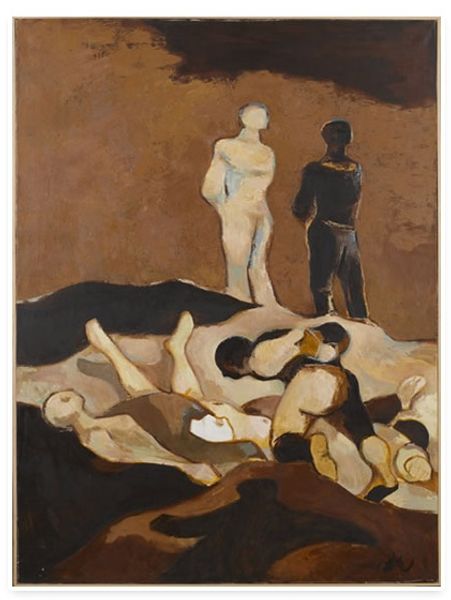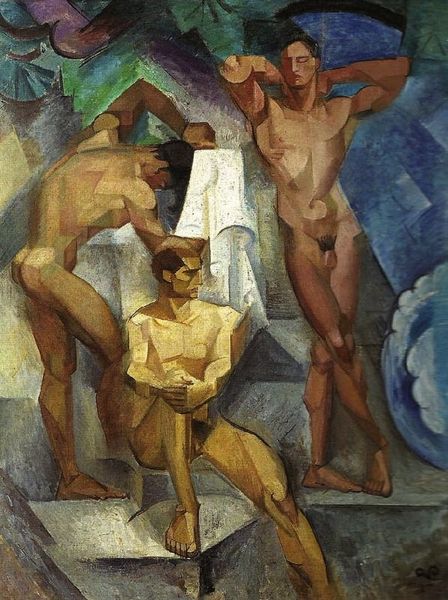
Resurrection, Copy of the Right Half of the Altarpiece in Tampere Cathedral 1907
0:00
0:00
painting, oil-paint
#
allegory
#
painting
#
oil-paint
#
figuration
#
oil painting
#
symbolism
#
history-painting
#
nude
Copyright: Public domain
Curator: Magnus Enckell painted this piece, titled "Resurrection, Copy of the Right Half of the Altarpiece in Tampere Cathedral," in 1907, using oil paint. What strikes you initially about it? Editor: The pale color palette immediately creates a sense of ethereal calm. The subjects are bathed in this milky light, softening the overall impression, almost like a faded fresco. There’s a deliberate sparseness that evokes a feeling of tranquility but also detachment. Curator: I agree; it’s a powerful use of color to underscore the allegorical themes at play here. Enckell's choice of pale hues and relatively simple forms invites a structural reading. Notice how the figures are arranged in a shallow, frieze-like composition, echoing classical motifs of resurrection and spiritual ascent. The painting’s compositional balance reinforces its intended theme: rebirth. Editor: Absolutely, and I wonder how much that careful arrangement is connected to its materiality, especially as it is based on an altarpiece. These types of artworks and the use of oil paints served specific functions within religious spaces of the time. Curator: Good point! But considering the symbolism—the figures emerging from what seems like a terrestrial realm into a bright expanse, unclothed and vulnerable— it’s difficult not to focus on the structuralist notion of binary oppositions. Light and shadow, earth and sky, life and death. Enckell reduces them to pure form. Editor: Indeed, but let’s consider the practical work involved, especially its origins as part of an altarpiece. This artwork, through its chosen materials and Enckell's labor, acts as an object of both reverence and societal aspiration. Its original display in a cathedral makes it a focal point within that setting, enhancing its physical presence and elevating its thematic significance. Curator: That’s certainly valid. By simplifying form and employing such a muted color palette, Enckell guides our gaze and helps create a spiritual atmosphere. He prompts introspection about humanity, death, and potential rebirth. Editor: Right. When viewed from a materialist viewpoint, we can view Enckell's reproduction as a method of preserving and transforming the sacred meaning connected with the altarpiece, rendering this into a more accessible emotional and reflective encounter. It really captures the transformation and power through both symbol and physical rendering.
Comments
No comments
Be the first to comment and join the conversation on the ultimate creative platform.
